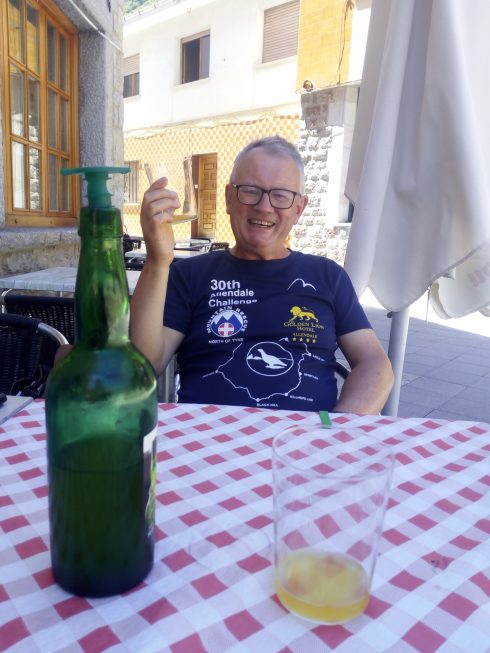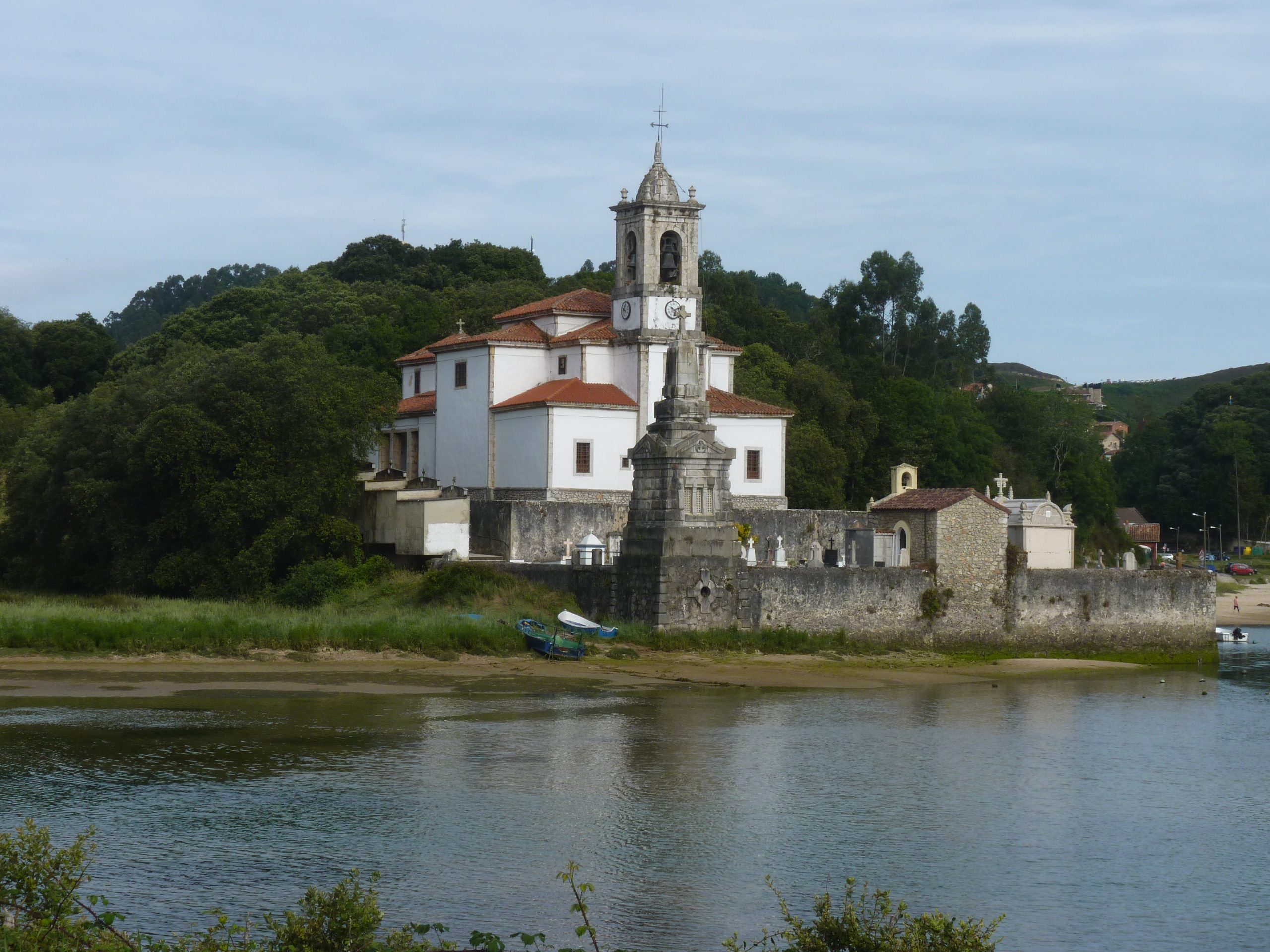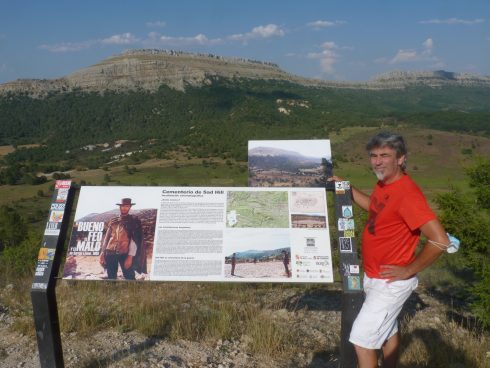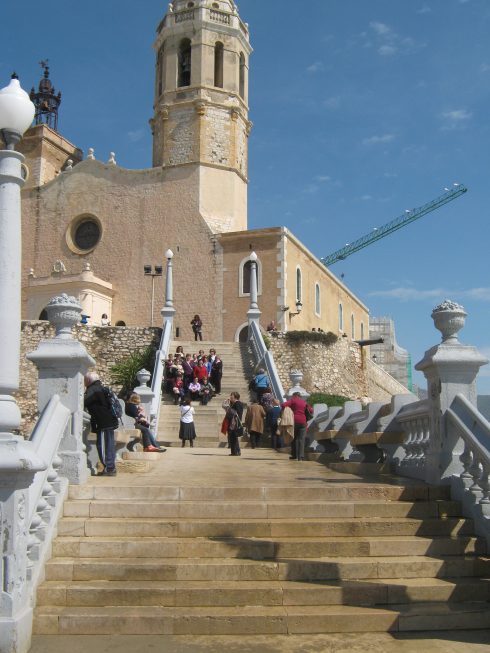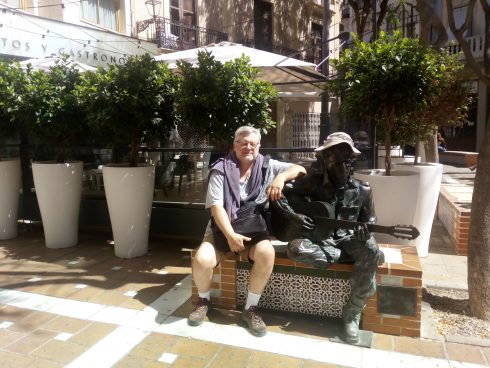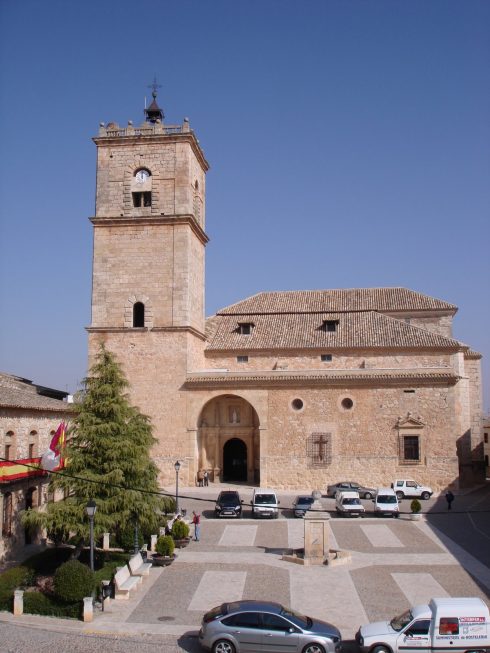The church of Niembro has been used for many Spanish films and two English language films, and its location on the ría (a tidal river) lends it a special atmosphere.
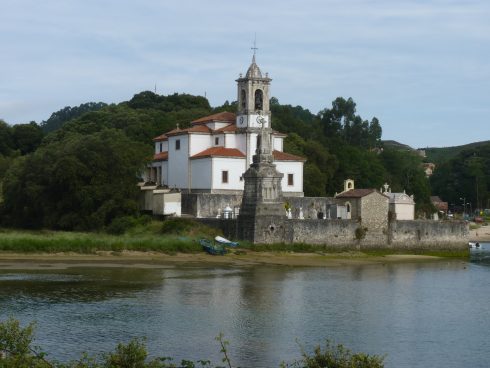
The House of the Damned (1974) is an interesting minor horror film made in Asturias at Celoriu (Llanes) at Niembro with its famous church and sailors’ graveyard on the beach, where Carmen Sevilla lives in the film, as well as San Pedro de Ambás, Tazones and Villaviciosa, where the Monasterio de Santa María de Valdediós represented the psychiatric hospital, while the meadow scenes were shot around the Palacio de Bedriñana.
We visited the monastery and it turned out to be the first visit post-Covid. It certainly has a lot of atmosphere and the early Romanic church is a treasure to behold, with some of the original paintings still clinging to the walls.
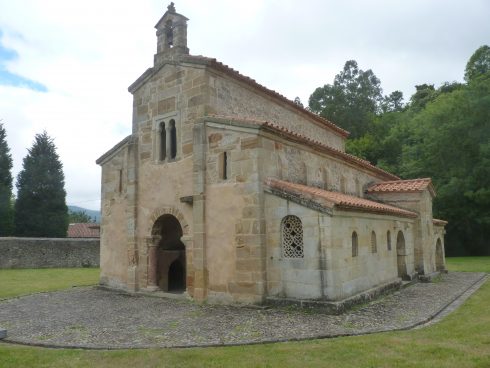
Although a Spanish production, it starred Donald Pleasance as the villain in search of a treasure that only the mute girl knows the whereabouts of.
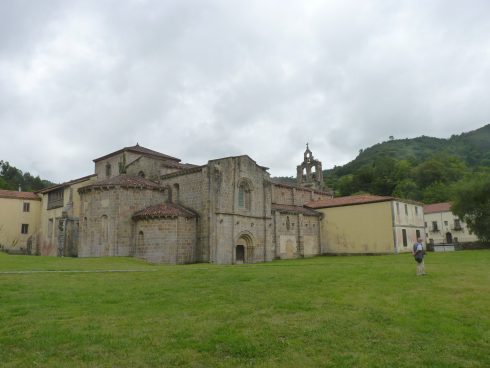
Talk of Angels (1998) is the story of an Irish woman who comes to Spain to escape the political turmoil of Ireland, arriving ironically just in time for the eve of the Spanish Civil War.
Frances McDormand stars and a young Penelope Cruz participates among lots of the best Spanish actors.
A mansion featured in the film is the Palacio de Los Altares just outside Pancar near Llanes, Asturias, although the building was practically destroyed by a fire in 2003.
The beautiful coastal scenery was all shot around there, including yet another scene at the beach by the sailors’ church and amazing cemetery of Niembro, near Llanes, built at the end of the 18th century. The beach with the large rock just off the shore is Ballota beach near Llanes.
The scenes in the town were shot in the capital of Asturias, Oviedo, whose historic centre preserves its old world character.
The chapel in the mountains visited by the young romantic couple is the Capilla de La Salud.
In Oviedo we can find the cloister where the priest, the great, late Spanish actor Paco Rabal threatens Franco Nero. The square with the arches where the workers are massacred is also in Oviedo, as is the Cafetería Peñalba.
We stayed at Andrín, an elegant village with a fantastic beach and chiringuito overlooking it, amazingly free of tourists, unlike Llanes.
Asturias has had its fair share of films, including Mystery on Monster Island (1981), although it wasn’t such a small island considering they travelled all over Spain to make this movie starring Peter Cushing (replacing the original choice of James Stewart, who fell ill) and Terence Stamp.
The Canary Islands were used for the volcano and jungle scenes, Madrid, for elegant San Francisco, and the beaches of Otur, Cadavedo and Queruas for all the comings and goings on the island, all near Luarca in Asturias were the locations for a Jules Verne story of giant slugs and monsters. Verne even gets an oral cameo when the professor mentions him.
The writer and co-director for this film was the Valencian Juan Piquer Simón.
Crystalstone (1987) is a curious Spanish (writer/director) film in the Disney style (evil aunts, orphan kids, nasty pirates etc), set in Spain in 1908, but with British actors.
Filming of the steam train scenes took place near Llanes in Asturias, with the night time scenes in the station using that of Posada near Llanes.
The actors stayed in the Hotel Don Paco in Llanes.
In Rowing in the Wind (1988), Hugh Grant attempted to capture the romanticism of Lord Byron, without dying of dysentery in Greece in this pan-European epic, set at Lake Geneva, but with a Spanish director who inevitably brought as much of it all back home as possible.
Although Geneva gets a look in, so does Asturias, where filming (and the characters’ target practice with pistols) took place at the beach at Borizu, a beach about 400 metres in length located near Celoriu.
Shelley’s funeral pyre was also filmed on the beach.
The Town Hall of nearby Llanes has created a Cinema Route, enabling visitors to identify the sites of many productions made there. In these areas you will find plaques with stills and information from the films made there. Where possible the plaques have been placed where the cameras were when the shots were taken, to give the greatest realism possible to the observer.
Woody Allen has a statue in Oviedo in Calle Milicias Nacionales, and in Vicky, Cristina Barcelona (2008), when the action moves to the greenery of northern Spain we can see the Naranco Mountain of Asturias, where Penelope Cruz gives Javier Bardem a massage, and Avilés, and the capital Oviedo.
While filming in Asturias, with its green rolling hills and spectacular coastline, Allen and his stars stayed at Oviedo’s 18th century Hotel de la Reconquista.
The hotel appears in the film, as do other locations in Oviedo such as Santullano, the Plaza de la Catedral, the Tránsito de Santa Bárbara, Plaza de Trascorrales, Fontán market, the Corrada del Obispo restaurant.
In Avilés we can see el Jardín Francés (the French Garden) of the Palacio de los Marqueses de Ferrera and the San Juan lighthouse with the beach (Playa) de Salinas and its restaurant at the Real Balneario de Salinas.
In The Night Watchman (2016), the Asturias mining town of Morcín provides the coal mine, called Monsacro in the real world, which conceals a terrible secret.
The night watchman has returned home after a spell in prison to work there and face new demons, accepting a night watchman’s job in a mine, later wishing it wasn’t his.
Director Miguel Ángel Jiménez shot part of the film, located in Kentucky, in the USA but apart from Morcín, also used the Asturian locations of Mieres, the pit at Sotón and San Martín del Rey Aurelio, as well as the forest at Artikutza, Gipuzcoa.
Marrowbone (2017) is a Spanish film in which a British family escapes to the USA, which is actually Asturias, home of the Spanish director.
The Valle de Arango near Pravia provided the large house, the Palacio de Arango, where the action is focused, and whose medieval tower gives character to the main character.
The abandoned La Vega arms factory in Oviedo provided various locations, such as Molly’s shop and the library, and also the main street of the village.
The beach scenes were filmed at Xagó beach, just north of Avilés.
The Legion (2018) is as yet unreleased, but crew and actors spelt quite some time in Asturias, staying in and around Pola de Somiedo, where we spent three days walking in the glorious, green mountains.
The Romans are bogged down in Armenia and send a messenger to get help. While they wait the actors can enjoy the mountains, lakes and valleys of the Natural Park of Somiedo.
Among the park’s locations were La Farrapona at 1,708 metres, and the frozen lakes of Saliencia.
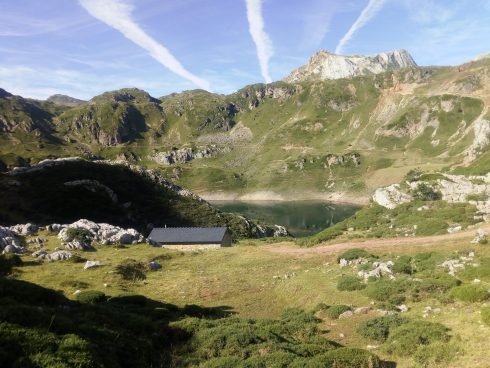
They also filmed at Valle del Lago.
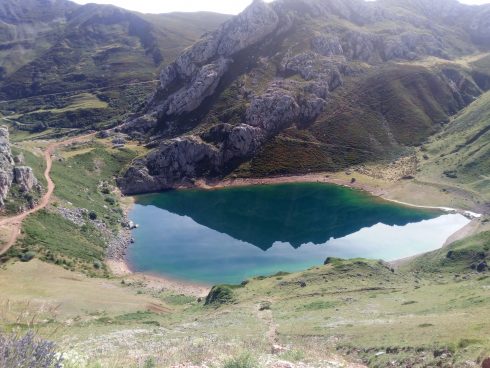
We walked both trails, understanding the tribulations of walking hundreds of miles just to fight a battle.
Most of the crew’s lodgings were at Pola de Somiedo. So were ours, including a night at the Pensión Peña Negra, which had a challenging bathroom, which Mickey Rourke, who stars in the film, would have trashed in seconds, if he didn’t already.
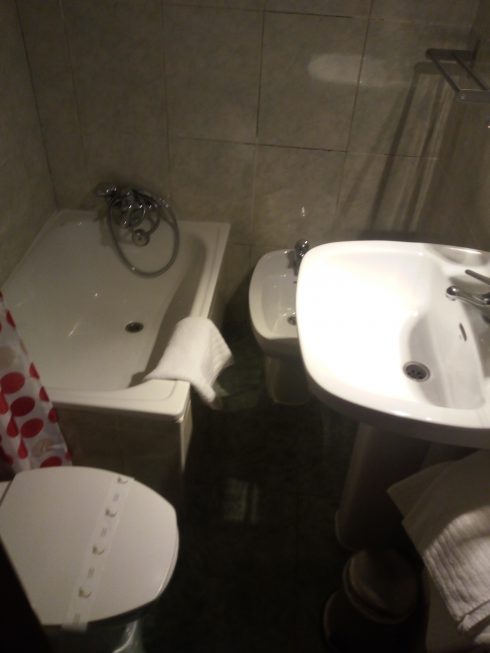
The staff at the Hotel Castillo del Alba informed us that the actors practised their sword fighting on the terrace behind the hotel.
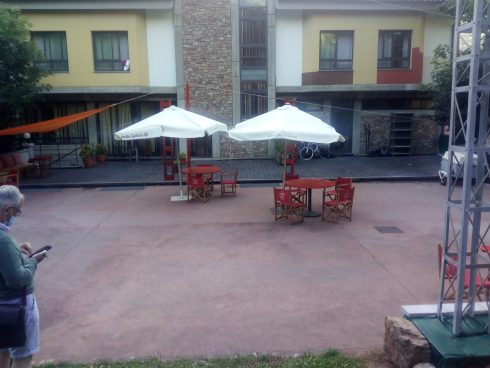
Asturian mountains are famous for their bears, and the regional cider helps make the fear of meeting one almost bearable…..
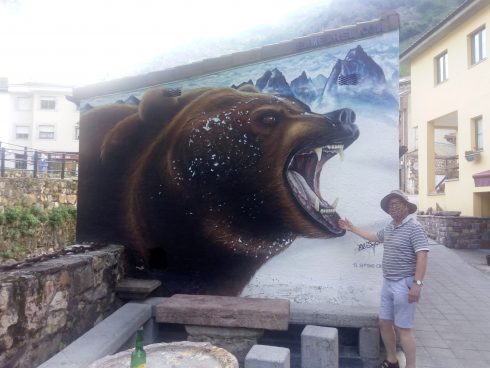
….as Thelma frequently discovered.
